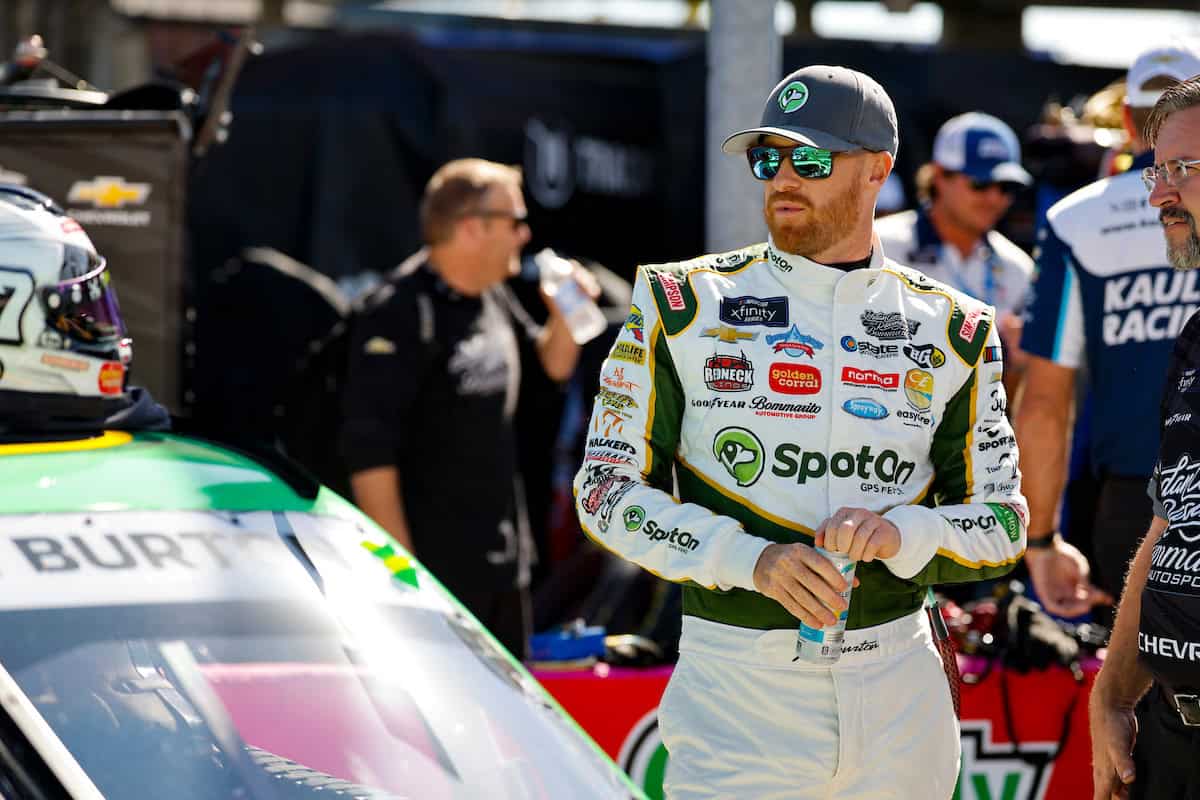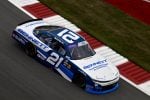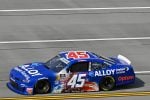Jeb Burton’s weekend at Talladega Superspeedway was — let’s call it eventful.
The first big crash of the day that took out several of the NASCAR Xfinity Series playoff contenders was, to his admission, partially on him as he explained on X (formerly Twitter).
Burton then got damaged in the Aric Almirola crash with two laps to go, and his potential bid at a third win at Talladega turned into a 17th-place finish.
A busy, chaotic day at Talladega. Par for the course for almost any driver. But there was a point where Burton’s weekend was set to be more, at least according to him.
“I was supposed to be in (the NASCAR Cup Series) race today,” Burton posted on X. “Had it all signed and done, but this lawsuit situation made it very difficult for us to be able to go and make the race so we backed off. Hopefully next year!”
Burton then left a few more tea leaves to sift through among some trash talk with fans, saying it was going to be with a “winning team” in the Cup Series. The biggest of which was a reply from one tweet — yeah, I still call them tweets — saying that since Front Row Motorsports and 23XI Racing cars are open teams, that it’d be harder to qualify to get in to do so. Burton replied with an emoji.
“100%.”
It’s the first example we’ve had, at least discussed in public, of a team or driver shutting down their chance to enter as an open car with the new rules in place for the team’s part of the antitrust lawsuit against NASCAR. The rules allowing a limit on entries goes on top of all the things open teams are up against, most notably the money they lose out on by not spending more for a charter.
The charter system has already, in a way, bit Burton in his career. Burton’s first, and so far only, season in the Cup Series was in 2015 with BK Racing. The next year, the charter system was introduced, and with that and a loss of sponsorship, Burton was released and BK shrank from a four-car team to a three-car team.
But it’s not just Burton that’s been bit by the charter system, it’s all drivers that are looking for opportunities to make starts in the Cup Series. Seventy-five drivers made at least one start in the 2015 Cup Series season. That number was down to 61 the next year when the charter system started.
This year, among the 60 drivers who’ve made at least one Cup start, only eight are full-time drivers in NASCAR’s other two national series. Life’s already hard for the smaller teams in the charter system. Add in the pending lawsuit and ensuing rule changes limiting entries, and it’s easy to see why drivers like Burton aren’t getting the same opportunities they were 10 years ago.
And it might not stop there.
JR Motorsports, the team that won last year’s Xfinity title and has a chance to put all four of its full-time drivers in the Championship 4, announced its 2026 lineup on Tuesday (Oct. 21). The team will continue to run four full-time rides and one part-time ride. However, only two drivers — Justin Allgaier and Sammy Smith — are confirmed to be full-time.
Carson Kvapil is going to have to split time between JR Motorsports and another team to run a full-time schedule. Same for Rajah Caruth, should he decide to run Xfinity full time.
This could have something to do with sponsorship coming from the drivers involved, or maybe there’s an organizational shift of resources that we don’t know about. However, there’s a few ways the charter lawsuit may influence not just what JRM is doing, but what other teams in Xfinity are going to have to do when deciding their 2026 lineups.
If NASCAR wins the lawsuit during the offseason, there’s a chance that the six charters from 23XI and FRM are opened up to all bidders. That very well might include JRM after it made its Cup debut at the Daytona 500.
Then, there’s Haas Factory Team, Richard Childress Racing and Kaulig Racing. The teams that have a presence in Cup might decide to pull the trigger and turn more of their focus toward Cup racing. There’s already a rumor that Kaulig could shutter its NXS program entirely, which would make sense given that it is fielding five teams in the NASCAR Craftsman Truck Series next year.
What does the landscape look like for a free agent with fewer established rides available? What does it look like for teams when there’s suddenly an abundance of talent — even potentially some in the Cup right now — available to sign?
Few drivers in NASCAR are great enough to have certainty in their long-term future. It’s already difficult enough for developing drivers or those on the fringe of competing at the next level to navigate free agency or part-time deals. Burton’s story of the race he didn’t run shows just how much the charter system, and the impending lawsuit hearings centered on it, trickle down into the depths of the sport.
There’s two weekends left in the NASCAR season. After that, how much 2026 will resemble 2025 in the sport will be decided in a courthouse in North Carolina. And it doesn’t just decide the fate of the sanctioning body and two of its teams. Everyone’s careers, in different ways, weigh in the balance.
James Krause joined Frontstretch in March 2024 as a contributor. Krause was born and raised in Illinois and graduated from Northern Illinois University. He currently works in La Crosse, Wisconsin as a local sports reporter, including local short track racing. Outside of racing, Krause loves to keep up with football, music, anime and video games.




